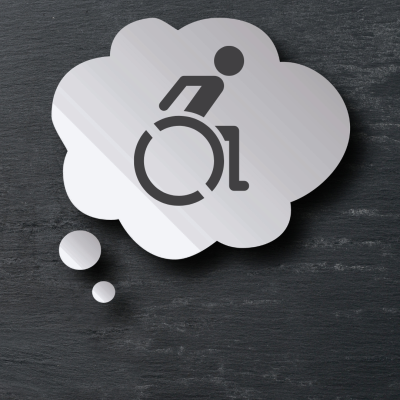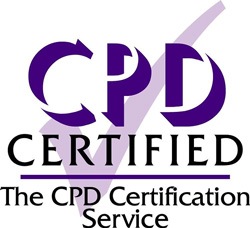How to prevent unconscious bias around disability

It’s not always easy to determine why we make certain choices. If you ask yourself, what made you choose those clothes, pursue that career, or be friends with certain people, you’ll probably think about your preferences and inclinations. “I bought that coat because I like the colour red, and I’m a fan of that particular fashion label,” – Yes- but where do those preferences actually come from? What do we really base our choices on? The truth is, we make many decisions in life based on information we aren’t entirely aware of.
In other words, a lot of our choices are made without conscious thought.
The danger here is that if we aren’t conscious of the reasons why we make decisions, we may be misinformed or making the wrong choice as our selection is based on something deep within our mind, known as unconscious bias.
Now consider a workplace scenario, where a manager is interviewing a number of people – one of which is a person with a visible physical disability. Can you be sure that the interviewee is making a fair decision based purely on candidate merit? Or could there be bias at play? Could that person have a buried, unconscious opinion that a person with a disability will be less able to do this particular job?
Some may think that having bias towards a non-disabled candidate may seem outdated and unrealistic but consider also that over a third (36%) of the population tend to think of people with disabilities are not as productive as everyone else.
In fact, it’s already been proven that more than one in three people show an unconscious bias against those with a disability in such scenarios, which amounts to a higher level of bias than gender or race.[1]
Now, if your business is making leaps and bounds through its efforts to become more inclusive, and your recruitment drive has embraced accessible ways to apply, it’s worth remembering that these efforts may be hampered by the fact that staff interviewing and selecting candidates may have unconscious bias.
So what is unconscious bias?
In order to process an abundance of information, our unconscious brain assigns different objects, people, places and things to different categories. This is performed at super high speeds and has its roots in our primal instincts, when we were forced to make fast decisions in different scenarios related to whether or not, a certain situation was dangerous.
Using this same process, we still make learned assumptions, or pre-judged thoughts depending on many factors and influences. These include previous experiences, what our cultural backgrounds have taught us, the media- or even opinions of those around us. As you would imagine, the assumptions made through this process are very often wrong, leading to biased judgments.
Affinity bias
Affinity bias is an example of unconscious bias whereby we respond positively to those who look, and sound like us. It’s been found that we are drawn to and have a strong affinity towards people if they speak or behave in a similar way to us. Scientific studies have revealed through scans, that people who see images of faces different to themselves, immediately alert activity in the brain that signals danger, reverting to the primal triggers we once used in a survival setting.
This means, without awareness, our reactions towards a person that is ‘different’ may not be positive, which could result in a myriad of issues in the workplace. It can impact team decisions, recruitment, management, team dynamics and of course, the overall diversity within the organisation.
The good news is that awareness of any biases will alleviate them, and with a few cultural changes within the workplace, you can work towards an inclusive ethos that will improve diversity and accessibility.
Preventing bias through training
The golden rule in anything related to inclusivity or accessibility is- gain awareness first and continue to make it the foundation of your efforts. Preventing unconscious bias is no exception. Train staff so that they have a good solid knowledge of disability, so that it is embedded in their consciousness. This will mean that the more they experience and learn about difference, the less they will create negative connotations to unconscious thoughts. Focus strongly on those people that will be in decision making positions to ensure their potential biases are addressed.
If you do appoint a disability awareness trainer – make sure that person has lived experience of disability themselves. (Read about our services for training here). As I’ve said a hundred times before- make sure all levels of seniority are on board, from C-Level down, and implement training across all departments.
Give managers specific training built around supervision, so that they are equipped with the tools they need to confidently manage and support staff with a disability.
Training also helps dispel myths such as the one about productivity we described at the start of this blog. For example, help your staff to learn that reasonable adjustment needn’t be a budget breaking upheaval- in fact on average it costs just £75! Make them aware that only a small proportion of disabilities can be seen- over 80% are hidden, and 43% of those non-visible disabilities aren’t kept secret- so there may be more people working for the company with disabilities than you know!
Create a Culture shift
Show your staff that inclusivity is not a fleeting HR project, but a shift in cultural identity, and a lifelong commitment to embracing difference. The more staff are aware of the importance of inclusivity, and how accessibility is valued by the company, the more consciously aware they will become, and less likely to be unconsciously bias. Make those changes to your physical building and environments, to your service, your materials, messaging, and services, so that evidence of inclusion becomes apparent in all areas of the business. Keep raising the bar and continue to measure your progress. If you are successful, go further- why not aim for Disability Confident status? And don’t forget to shout about your inclusivity achievements!
If your culture openly embraces disability, the people making decisions will unconsciously be more likely to see a person with a disability as a fitting candidate. They will be more likely to recruit, promote and best support those with disabilities.
Create steering groups
Create conversations and discussions around disability and embed it in all areas of the organisation. You should encourage the staff with disabilities to join a steering group allowing them and others to raise issues, create discussions around policies through meetings and forums. All levels of seniority from various teams should participate. This will help those with disabilities to have a stronger voice, whilst demonstrating to anyone who could potentially have unconscious bias, the true value and importance of maintaining diverse workforce.
Become aware of unconscious decisions
Finally, why not roll out Unconscious Bias Training across all teams, especially for those involved in recruitment? On a basic course, they will learn what it is and how it can influence our decisions and behaviours. There are a multitude of trainers, online, in-house, CPD approved etc, and they offer short courses for a reasonable price. After all, as soon as our awareness of an unconscious thought process is awakened, we are more likely to stop, before we make decisions to ask ourselves- why?
CHRIS JAY, MANAGING DIRECTOR – BASCULE DISABILITY TRAINING
[1] Disability: A Research Study on Unconscious Bias report by ENEI (2014),



